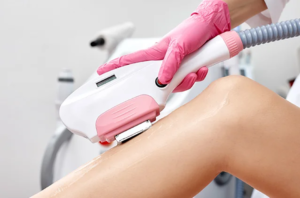We’ve been conditioned to associate white teeth with youth and beauty thanks to the animated smiles in Hollywood films and the spotless pearly whites in toothpaste advertisements. However, as the number of candles on our birthday cakes increases, many of us notice a gradual change from bright white to soft yellow hues in our mirrors. The truth about ageing yellow teeth is that our teeth might become discoloured as we age as a result of both internal processes and external influences.
What causes the truth about aging yellow teeth?
The natural ageing process: Thinning of the Enamel: Over time, the enamel, the outer layer of the teeth, due to wear and tear, the protective covering of our teeth grows thinner.
Genetics: Some individuals are genetically prone to thinner enamel or yellower teeth, which indicates that as they age, their teeth may yellow more quickly and appear yellower than those of other people from an earlier age.
Nutritional Factors: Some meals and beverages have a reputation for staining teeth. These consist of tea and coffee. These beverages contain tannins that can discolour teeth.
Red wine: Because it contains acid, this beverage can discolour teeth and destroy enamel.
Red wine: Because it contains acid, this beverage can discolour teeth and destroy enamel. Acids and dark colouring are frequently found in soda and other carbonated beverages.
Smoking and using tobacco: Tobacco contains tar and nicotine that can discolour teeth, whether chewed or smoked. Additionally, procedures like radiation and chemotherapy can significantly discolour teeth.
Poor Oral Hygiene: Lack of frequent brushing and flossing can cause plaque and tartar to accumulate, giving the teeth a more yellow appearance.
Fluorosis: Too much fluoride in the early years of life can cause fluorosis, showing up as brown or yellow patches on the teeth.
Trauma or Injury: Damage to the internal structure of the teeth from injuries might result in discolouration.
What are Aging Yellow Teeth Habits and Preventative Measures?
The following practices and preventative steps will help you keep your teeth’s natural shade:
Consistent Dental Exams and Cleanings: Professionals can remove surface stains and tartar accumulation that may cause discolouration. Regular examinations help identify and treat tooth problems before they worsen significantly, making it important to find a dentist near me.
Flossing and brushing correctly: Stains can be avoided by brushing your teeth twice daily using fluoride toothpaste to eliminate food particles and plaque. Daily flossing helps eliminate food particles and plaque that the toothbrush could miss in the spaces between teeth and below the gum line.
Occasionally use whitening toothpaste: Surface stains can be removed with the aid of whitening toothpaste. However, they should only be applied as directed and sparingly to prevent wearing down the enamel.
Limit Foods and Drinks That Can Stain: Red wine, sodas, coffee, tea, and other beverages should be consumed moderately to avoid unwanted stains. If ingested, avoid your front teeth with a straw to lessen the possibility of discolouration.
Steer clear of tobacco and smoking products: The use of tobacco products significantly worsens tooth ageing.
Use a Mouth Guard: If you grind your teeth, consider using a mouth guard to stop the enamel from eroding and revealing the below yellow dentin.
Eat Dairy and Foods High in Calcium: Dairy products and other calcium-rich meals can help build stronger teeth and bones.
Consume Lots of Water: Maintaining oral moisture can aid in washing away food residue and preventing plaque development.
Switch out your toothbrush: Every three months, or if the bristles are frayed, replace your toothbrush or toothbrush head. Using these preventative steps and habits, people can dramatically lower their risk of getting yellow teeth as they age.
As we age, keeping a whiter smile possible involves maintaining proper oral hygiene, regular dental check-ups, and awareness of variables that can cause stains. It’s important to get in touch with a dentist Sutton before getting started with any whitening regimen to make sure the selected technique is secure and appropriate for your oral health.





Be First to Comment